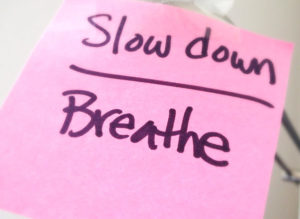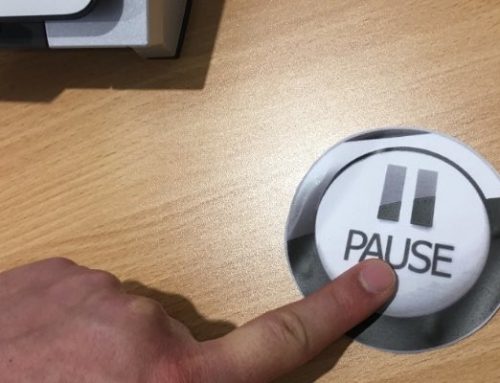 Pausing. Silence. A welcome break, you would think, in the torrent of words of today’s presentations.
Pausing. Silence. A welcome break, you would think, in the torrent of words of today’s presentations.
Funnily enough, a number of public speakers find silence awkward, they even dismiss it. Throughout my many years of Public Speaking coaching, I’ve heard several of my clients confess they’d rather rush through their presentations than slow down and say nothing once in a while. After some probing, the reasons for that practice boiled down to this:
- They just want to get the presentation over and done with
- They don’t want people to interrupt or think they’re ignorant
- Pausing causes too much intimacy, which translates into vulnerability and responsibility
I find this quite striking, because if you ask yourself what the purpose of a presentation is you might realize that that very purpose can only be fulfilled with a healthy balance of talking – and silence.
While many of us may think the purpose of a presentation is a transfer of information through speech and visual aids, it’s much more than that. Public speaking is all about transformation. It’s about shifting people’s thinking from “what is to what could be”, to quote Nancy Duarte.
In order to take an audience from, let’s say, a problematic situation to a solution-oriented outcome, or even if you simply want to share a great idea, you have to give them something that goes beyond facts and rhetoric. And that is Connection.
Connection is that “spirit of giving” (Simon Sinek), which translates into taking the time to understand people’s challenges and concerns, and caring about making the information as relevant as possible to them. It’s about building trust.
Why Slow Down and Breathe?
Connection happens not only by way of speech, but also through something equally important : Listening. Listening is the art of pausing, active silence, and turning your attention towards your audience, not yourself, during a presentation or even a conversation.
Listening can only happen when you slow down, suspend speech, and allow silence to manifest. As a result of silence, many wonderful things can transpire:
- You can check in and feel your audience’s pulse ( Do they get it? Is the information helpful and relevant?)
- You give weight to what you’ve just said
- You allow your audience to metabolize what they just heard
- You can pace yourself, relax and breathe – imagine!
Pausing and listening present significant benefits for both speaker and audience, and most importantly, they nurture the ground for that very connection to take place, which in turn gives more significance to your talk, as well as facilitates transformation.
So, if I were to give any Public Speaker – no matter what their level and experience – some well-seasoned advice, it would be to slow down, pause and breathe. (Here’s an expert post by Emma Taylor on controlling verbal fillers: https://www.emmataylorpresents.co.uk/blog/post/banishing-a-monotone).
Instead of rambling through your material and jumping from slide to slide slow down, make eye contact with the audience and give emphasis to those words that matter most. Instead of filling your talk with interstitial sounds, like uh, um, so, like, just be quiet. Instead of turning away and reading your notes – check in, ask a question, let the audience think with you. Breathe.
One of the lofty objectives of a presenter is to keep the audience engaged, and I don’t mean by cracking jokes or trying to be SNL’s latest entertainer. Engagement is all about connection, honesty and authenticity. And yes – a certain dose of vulnerability.
That takes courage and a brave heart. But in the end, as you stand there with a more settled mind, you will begin to realize you don’t even have to say so much and start to see the magic unfold as you draw the audience into your space.
Silence is not just a necessary physiological function, it is your companion in speech as you progress through life as a seasoned communicator. Let me close by sharing a quote by the 20th-century Indian philosopher, Sri Aurobindo:
“There are two great forces in the universe, silence and speech.
Silence prepares, speech creates. Silence acts, speech gives the
impulse to action. Silence compels, speech persuades.”
If you’re ready to pause and breathe more, please contact me at:



